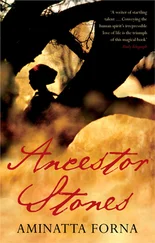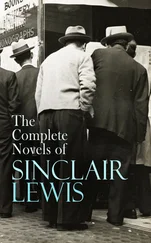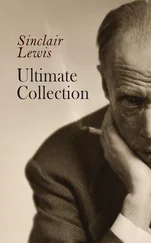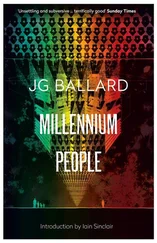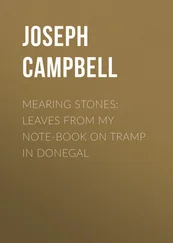Were I to write another book — Sixty Miles Out , I planned to call it, a pedestrian circuit around what was left of London — I needed to be able to interpret road signs, graffiti, menu boards in grease caffs. No point in lifting a camera if all I could locate in the viewfinder was smoke, vortices of dazzle. Pertinent ectoplasm. The visual world had become an unbreakable code. Photography, more than ever before, was an exercise in wish fulfilment, projection. The convex lens, distorting reality, took me into a zone of ghosts and phantoms: the middle ground.
Into places like Hunter & Harris, Opticians.
IS ONE PAIR OF SPECTACLES ENOUGH? SPORTS & HOBBIES? DIY? FORMAL WEAR? CASUAL WEAR? FASHION & COLOUR COORDINATION? BRANCHES IN BATTLE, BEXHILL-ON-SEA, POLEGATE. SPECTACLES ARE ALSO A MOST IMPORTANT STYLE & FASHION ACCESSORY & HAVING MORE THAN ONE PAIR IS AN AFFORDABLE OPTION.
If I could read that, things weren’t too bad. Disposable copy was still within my remit, the gobbledygook of ad men, admin, address. Reading matter that nobody reads. Folded pamphlets in green rooms where we wait for bad news.
Hunter & Harris kept a chained library of spectacles. On London Road, they were taking no chances. They ran to a rubber plant, a postive-discrimination matron behind the desk — but no customers. No clients for fashion accessories. The optician, a smooth and unflustered Asian gentleman, jacketless, would see me shortly: he smiled and nodded on his way into the small office, surgery, where he made his phone calls.
I’ve never minded waiting, sitting down in a warm, dry place — with no expectation to perform. But I wondered how Hunter & Harris took the decision to go with a window display of World Cup (Mexico City) T-shirts, blue gravel and yellow parrot-in-tree. I suppose the shock of working out what possible connection this surreal arrangement could have with eye problems was enough to get punters in through the door.
Not today. The receptionist filed her nails. I picked up a magazine — because it had a big CU of a Sony Precision Projection Zoom Lens. Plus the name JIMMY SEED (top right) on the cover. ‘Photography & Painting: Hockney, Handke, Sontag, Seed. Interviews, Features.’
The magazine was glossy, the illustrations lavish — and strangely familiar. They looked, to my admittedly unreliable eyes, like the missing portions of the A13 landscape. Frame-pulls of travelogue painted over in lurid acrylics. Worse, the hack responsible for this essay had stolen my title: ‘Deadpan! Jimmy Seed & the Illusion of Sustainable Existence.’ I began to read, with mounting horror, a garbled version of my own words, the profile of the Bethnal Green painter I’d abandoned three years earlier. Seed, once he climbed into his Volvo and set off for Rainham Marshes, moved out of documentation and into fiction. He was a future novel, not a deleted monograph. But some hack, name of Norton, had found and pirated my research. And without the courtesy of shifting a comma — or making any form of acknowledgement (share of the cheque).
This is what I read:
DEADPAN!
Jimmy Seed & the Illusion of Sustainable Existence
The position of the realist painter, the detached observer of metropolitan life, is increasingly complex. Life doesn’t work in the city. Roads are clogged. Buses don’t arrive. There’s a bug in the system. Marginal landscapes drift, swallowing all trace of their previous history. Jimmy Seed’s bingo palaces and snooker halls don’t disappear, they’re just not there. It’s a nice paradox, but a hard one to accommodate, permanent impermanence, loud ghosts that won’t go away. Everywhere we try our vacant and preoccupied gaze, there are widescreen holes. Blank walls to fill in Shoreditch. Rubble. Vacant lots. Women, wearing bright new leather jackets over saris and shalwarv, wait on the pavement outside locked doors under railway arches. The buildings Seed nominates, new ruins, don’t know what to do with themselves. They are untransformed, fossils of chipped plaster, deleted trade names; white ferns growing from weather-damaged courses. East London is haunted by a sense of non-specific embarrassment, of having outlived its liberties. Too much message, not enough content. Traffic lights hold trapped motorists, travellers, in a time warp.
‘It’s a memory game,’ Seed confesses. Over a cup of tea. In his restored artisan’s cottage, opposite the Camel pub, in a tributary at the west end of Roman Road. ‘You train yourself to remember the order of objects removed from the table.’
Jimmy Seed, Glasgow born, is comfortable with his long-term exile in this working/not-working district that used to be jellied-eel London. Bethnal Green is for plutocrats. Hip film-maker Danny Boyle stands at the school gates among knots of everyday folk, working mums, freelance dads. He is distinguished only by the quality of his leisurewear. Or so Seed reports with a certain relish. He’s amused by the notion of having his grungy epics exhibited in Dover Street. Young artists, travelling home to Leytonstone and Walthamstow from the latest Hoxton opening, glance enviously at old-timers like Seed and his mates. They are the scruffy survivors of the generation that followed Bacon east to Limehouse, Gilbert and George to Spitalfields. Second-division chancers who managed to infiltrate Shoreditch or the environs of Columbia Market at the right time, late Sixties, early Seventies. You could nobble a two-up, two-down in Wellington Row, Bethnal Green, back then, for less than a year’s council tax in Hackney now.
Seed’s neighbourhood crawls with Buddhists (soup and candles), BritArt print facilitators, hairdressers, but still finds room for the fabulous cave of Les the junk-dealer. With a business that opens at whim, for a few brief hours during which he does his genial best to repel all cash customers, Les is both artist and curator. He accumulates rubbish, postmortem clothes, records, books bought as ballast. And he packs them, with no sense of arrangement or hierarchy, into his filthy window. Display rather than trade. Frustrated book-runners, threadbare connoisseurs, beat against the padlocked door. Here are the real memory traces of London, lost lives, greasy suits with the imprint of dead bodies still on them. Les runs his shop like a franchise from the old Victoria Park Cemetery on the south side of Roman Road. A grim field to visit, the cemetery was once condemned for over-stacking verminous proletarian hordes. There are entire streets hidden beneath the uneven grass. But Les doesn’t discriminate. If an artefact has no fixed address, he will crowbar it into his cabinet of curiosities. This is where he breaks from Seed. Les deals with the madness of the city by incorporating everything : a conglomerate of deletions and residues, ash, fur, plastic, bamboo. Landfill with a modest price tag. Jimmy Seed, the area’s sanctioned artist, makes careful measurements. His memories are selective. He’ll take off on wild journeys of discovery, down the A13, in the direction of Dagenham, Rainham Marshes, the Estuary. He’ll park the Volvo, snatch a photograph. And then, in the privilege of the studio, he will work on a thirteen-foot canvas, very fast, using a ‘wet-on-wet’ technique; paint thinned with spirit, blotted with old towels, attacked afresh. Broad brush and sable brush. Large gesture and intricate detail. Thumbprint and bootmark.
The displaced Scot, having known poverty and the grind of manual labour, now suffers from a lust for ownership. He owns the building in which he paints. And several others: Edinburgh, Normandy, Folkestone. The bricks and mortar of his studio, I soon realised, meant more to him than the paintings themselves. Seed gestured derisively towards packed storage racks. Unsold canvases are so many oversized cheques, collateral for a future property portfolio. The chilly, ex-industrial space in which I found myself was the sort of killing ground familiar to British gangster films, victims slung from meat hooks in The Long Good Friday . Seed digs out awkward canvases, trundles them across the floor. Vast slabs of Aldgate East Underground Station become windows on a parallel world. ‘I paint the bits I want to possess,’ he boasts. His new paintings are unpeopled. The rush of cripples, skinheads with festering love bites, with which he achieved his early notoriety, is over. The lowlife have been expelled. No more dogfaced BNP supporters. No more pit bulls hanging from trees in Victoria Park. No minimally covered slags propping up Whitechapel walls. The Seedian underclass has been banished. Status revoked. You no longer see them, but they are still there, choking for breath under a casually applied emulsion wash. Uneconomic immigrants. Headache substitutes. Desperate and bestial forms cannibalised from Francis Bacon, Seed’s early mentor and — according to legend — drinking partner. Bacon travelled downriver for the hardmen, dockers and villains who knew how to wield a belt. Seed came for property. Decommissioned sets that he could paint, before the developers moved in.
Читать дальше




